It's very scary when your cat suddenly develops paralysis (or a thrombus). At first the cat screams in pain and is very confused. This is due to the sudden loss of blood flow to the hind legs. This is very scary and painful. In some cases this happens when you're not around and then when you get home your cat is suddenly paralyzed and you have no idea what hit her. Whether or not you are present during the "attack" it is always advisable to call the vet.
What is it?
There are two conditions that are the main cause of acute paralysis in cats and are related to spinal paralysis. One is an acute problem in the spinal cord and the second is thromboembolism. That's a tough word for a clot that gets lodged in the blood vessels.
What exactly is happening?
In most cases, the problem starts with an enlarged heart. See HCM in Cats for more information. Because the heart is enlarged, blood flows more slowly in some places. Since the blood flows less quickly, it can clot at this point. This usually happens in the left atrium (atrium of the heart). From the left atrium, the blood goes to the aorta (large hollow artery), which then supplies blood to the entire body. Sometimes the blood clots are very small and are not a problem. Sometimes they are slightly larger and get stuck in very thin vessels, such as in the brain. In humans, we call this a TIA. Sometimes the clot is big enough to just fit into the aorta, but not more once the blood vessels shrink just a little bit. This often happens at the point where the aorta branches into the smaller but still large blood vessels towards the hind legs. Occasionally, the clot gets stuck in just one hind leg.
Other causes of a thrombus (blood clot) can include: clotting problems, tumor and hyperthyroidism.
What are the symptoms?
Once a thrombus is lodged, severe pain occurs. During the acute phase (the first 24 hours) your cat will show enormous pain, which is literally expressed by screaming. In some cats, the pain is only temporary. The paralysis occurs immediately after the entrapment.
The first and worst pain comes from the blood not flowing to the hind legs. As a result, no nutrients can be supplied. The feeling in the hind legs also slowly disappears, usually within 24 hours. Once this happens, your cat will no longer feel pain either. Usually the hind legs feel cold.
The vet will notice other symptoms that humans don't see, such as a lack of pulse, heart murmurs, and an irregularity.
What is the treatment?
The chance of healing is very low. Treatment is almost always lengthy, incomplete and involves a lot of suffering for your cat. The probability of a recurrence is also very high. In some cases, a cat can recover spontaneously, sometimes in as little as 2 hours. In many cases, the vet will take your cat in and give it 24 hours to see if it can recover. In some cases it is ethical to wait.
In very rare cases, giving blood thinners or starting anticoagulants may help. The big problem and disadvantage of this approach arises as soon as the blood in the hind legs starts to flow again. Due to the temporary undersupply of blood, there is an accumulation of waste products. This waste has to travel back into the body from the hind legs, this is called reperfusion injury and is often accompanied by further pain. In many cases, therefore, euthanasia (possibly after admission) is recommended.
How can I prevent it?
According to the literature, about 30 percent of cats with heart problems develop thromboembolism. These numbers range from 10 to 50 percent. But even healthy cats can get a thromboembolism and the cat doesn't even have to be old for that. It's not always preventable, but detecting a heart problem early can reduce the risk.
So if you take your cat to the vet for a general check-up every year, there's a higher chance that a heart problem will come to light. Treating this heart problem can reduce the risk of a thrombus.
This text was translated by a translation machine
 Horse Pharmacy
Horse Pharmacy Rugs
Rugs Care
Care Saddle and Attachments
Saddle and Attachments Leg Protection
Leg Protection Bridles
Bridles Feed
Feed Fly Masks
Fly Masks Saddle Pads
Saddle Pads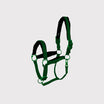 Headcollars and Ropes
Headcollars and Ropes Bits
Bits Other Disciplines
Other Disciplines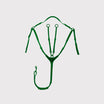 Reins and Auxiliary Reins
Reins and Auxiliary Reins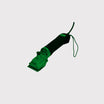 Clipping
Clipping Western
Western Eventing
Eventing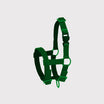 Foals
Foals Reflection
Reflection Therapy Products
Therapy Products Boots and Shoes
Boots and Shoes Breeches and Belts
Breeches and Belts Tops
Tops Safety
Safety Competition
Competition Heated Clothing
Heated Clothing Gloves
Gloves Socks
Socks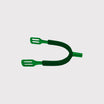 Spurs and Attachments
Spurs and Attachments Technology
Technology Whips
Whips Gifts
Gifts Casual Wear
Casual Wear Underwear
Underwear Rider Pharmacy
Rider Pharmacy Bags
Bags Books
Books Laundry supplies
Laundry supplies Jewelry
Jewelry Feed and Waterbowls
Feed and Waterbowls Equipment
Equipment Tack Room
Tack Room Pest Control
Pest Control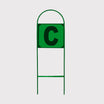 Arena
Arena Horse Toys
Horse Toys Wheelbarrows
Wheelbarrows Yard
Yard Surveillance
Surveillance Disinfect
Disinfect Washing Area
Washing Area Lighting
Lighting Horse Pasture
Horse Pasture Current Conductors
Current Conductors Pole
Pole Insulators
Insulators Energisers
Energisers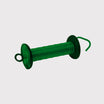 Gate Handles
Gate Handles Batteries and Accumulator
Batteries and Accumulator Nets
Nets Grounding
Grounding Tools
Tools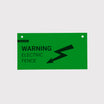 Fencing Security
Fencing Security Wolf Defense
Wolf Defense Fencing Sets
Fencing Sets Fence locks
Fence locks Dogs
Dogs Cats
Cats Rodents
Rodents Dogs Pharmacy
Dogs Pharmacy Cats Pharmacy
Cats Pharmacy Rodents Pharmacy
Rodents Pharmacy Cattle Pharmacy
Cattle Pharmacy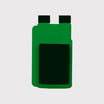 Poultry Pharmacy
Poultry Pharmacy Veterinary Supplies
Veterinary Supplies Cattle
Cattle Sheep and Goats
Sheep and Goats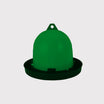 Poultry
Poultry Heat Lamps
Heat Lamps Calves
Calves Marking
Marking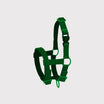 Halters
Halters